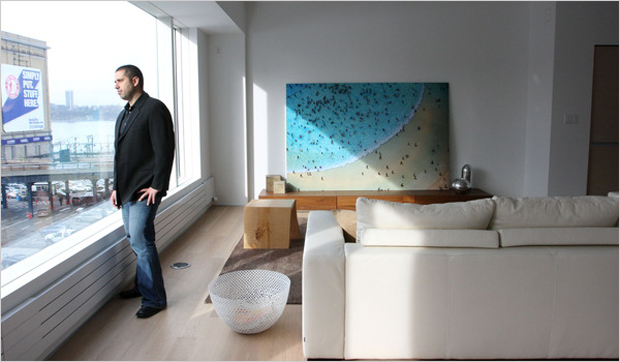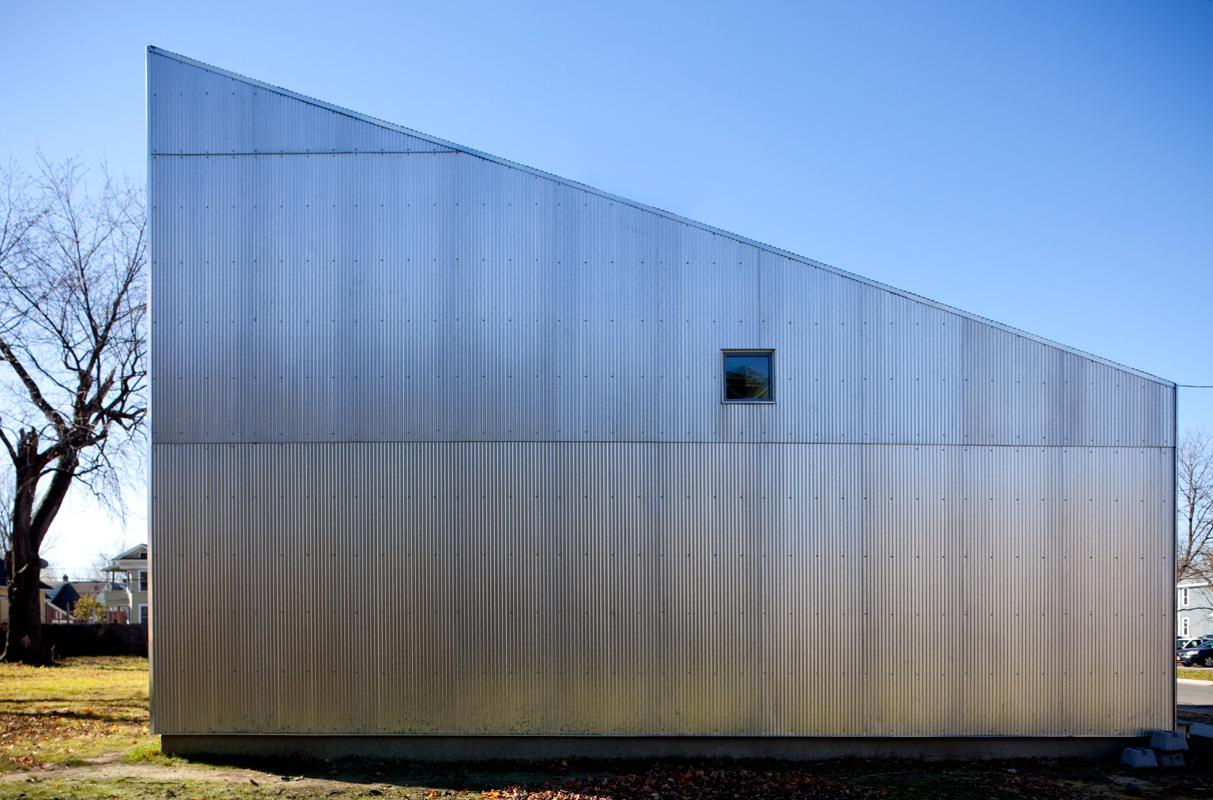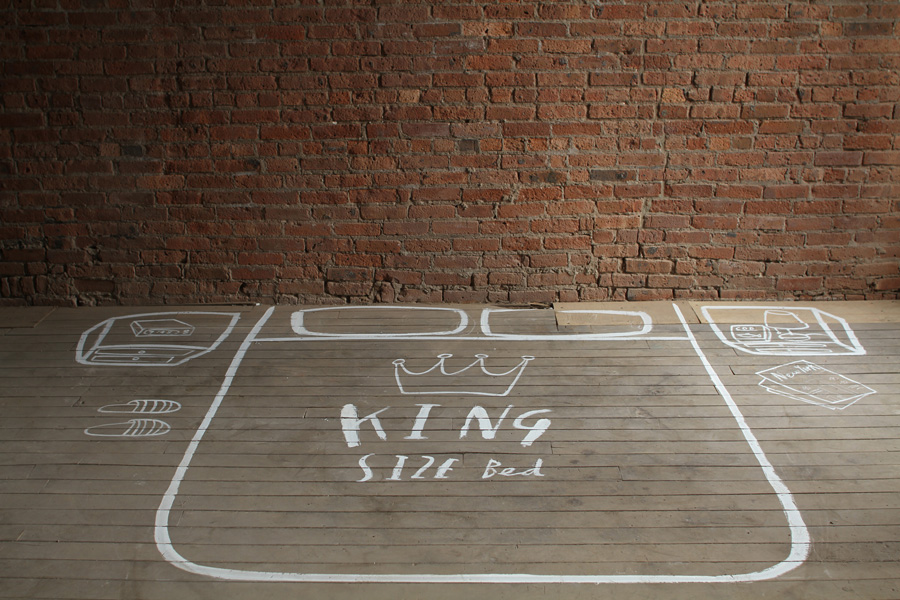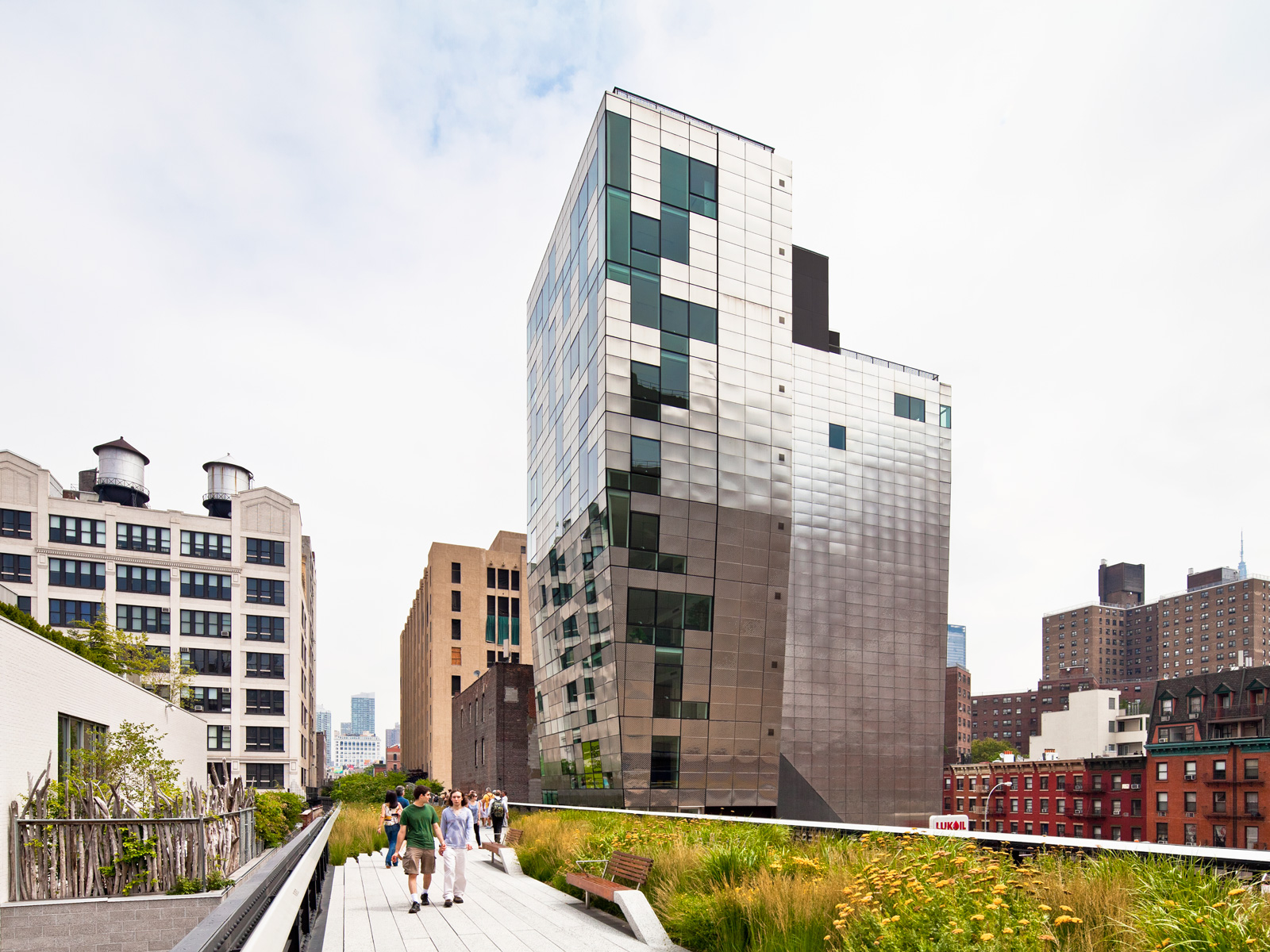
[Image Credit: nytimes.com]
A couple of years ago, BUILD got to know Jared Della Valle at the Reinvention 2011 event in Phoenix, Arizona. We were astounded by his bandwidth, professional diversity and architectural accomplishments. Last summer, we sat down with Jared in Manhattan, where we got caught up on the architect-as-developer model and working in the new economy. Part I of the interview can be viewed here.
Your firm, Alloy Development, adheres to a marketing strategy of “patient investment capacity.” What is patience in the context of New York City, where things can’t happen quickly enough?
It means waiting for exactly for the right opportunity to spend your money. The deals we do need to have a personal connection to us. It needs to be conservative as an investment, we need to know that we can make money on it, or there needs to be enough margin for error that, if the market tanks, we’ll be okay. And if we get outbid, that’s okay. We’ll wait for the next deal. Always go into negotiating knowing what your limits are.

[Image Credit: Richard Barnes]
Can an architect tell the difference between a great deal and a good deal?
As an architect you can spend all the time that someone else has to pay an architect for. The messier it is, the better it is for us. There’s more for us to figure out. All of the recent projects we’ve done occurred in recently rezoned districts. If it’s not a neighborhood yet, if it’s a total mess, if it’s been on the market for a year, perfect. Those are the ones we’re great at. Because you don’t have to pay anybody to do the due diligence. You do it yourself and you say, “Look, I solved this.”
You can’t kind-of get into this business. You have to do it. I did this six or seven years unsuccessfully until I got my first real deal. I knew the number signs were way too big and I was confident that this is going to work. And now I’ve had six or seven years of building an actual business. I’m at the point where banks and institutional equity groups are looking to partner with us. These groups are now calling us and want to lend to us. People are throwing money at us now because they don’t have other outlets in which to put it. These days, the buckets of money from lenders are so specific that you have to find out what they want before you even put the deal together.
What did you learn from the recession?
It really beat us up, but it made us stronger. Our 18th Street project was a huge success because we didn’t lose money. $22M loan and $30M something sellout theoretically. We finished 4 months late because of foundation issues and that was the difference between a stable economy and the Lehman Brothers collapse. We had buyers who left hundreds of thousands of dollars in deposits on the table, which they walked away from. That was not enough to cover the losses. You’re talking about extraordinary terror. You can’t negotiate with a bank if you pay your bills. We always paid our bills so a bank would never negotiate with us. These days, we only do so much business that if the shit hits the fan, we can pay everything off.
How does a struggling architect put together a real estate package worth millions of dollars?
I would make a deal with someone and try to get a loan period, where my deposit wasn’t hard or I didn’t have a deposit while I was talking to investors. Then, I would try to put together the money for the deposit, and always offered to not take a penny during development. Investors were willing to overlook the fact that I didn’t have experience because I didn’t take any fees. I’m going to do everything and I’m going to invest it into the project. I wasn’t looking to just collect a check. I’d say, “I’ll get mine at the back end just like you. You put up the cash, I’ll do all the work, I’ll take nothing, and I’ll get my piece at the back.” This was very effective.
How did you pay your bills?
With the architecture practice. I was working for my private architecture clients during the day and I was doing the development work at night.

[Image Credit: Mac Premo]
We really admire the scrappy nature of your design strategies. On the 192 Water Street project, you used chalk outlines on the wood plank flooring to indicate possible furniture layouts and to add character. How did potential buyers respond?
They didn’t know what hit them. It worked because of this neighborhood, DUMBO. People who live in DUMBO tend to stay in DUMBO. There’s so few developments in DUMBO and the buyers are sophisticated. People were ready to sign immediately.
We tend to sell a little bit cheaper than everything else. We created urgency because everyone in New York is such a real estate fiend. They know exactly what things are worth. When you apply discount and something that’s better than what they’re currently living in, people need it right now. We used that to get hard closing terms.
The 245 10th Avenue project sits adjacent to Manhattan’s Highline project. What was the process like for city and community approval of the project?
That was a shit-show. The weird part was that nobody had done it yet. When we bought it, nobody had gone through the Highline process. The Parks Department was involved. Everybody was involved. People were talking about connecting to the Highline. We bought it in advance of the zoning phase. So actually, it wasn’t bad. We had a bunch of stuff that zoning hadn’t contested yet, so there were a bunch of code changes after we designed the building. We’re very good at finding zoning exceptions.
We bought that project in 2005 and I was one of the investors. I put together the deal. We brought in a developer to bring in the rest of the cash and take on the guarantees. We designed it and we invested in it. But Citibank stopped lending mid-way through the project, and we had the same brand of crane that collapsed on the Upper East Side. We got shut down for a year. For all the sales that had materialized we had to give back their deposits. All hell broke loose and we tried buying the note from the bank. Citibank wouldn’t sell to us, and someone else bought it. They re-initiated sales right when phase two of the highline opened. They’ve done very well with a high price per square foot. Since the market stopped everything, it’s one of the only brand new condominiums left. It came out beautiful at the end of the day.

[Image Credit: Andrew Bernheimer]
Have you lived in any of your developments? If so, how was/is it?
No, I’m moving into my first one soon. We’ve just bought a new building and my family and I are moving into the ground floor. My daughters are thrilled and my wife is getting a studio for her letterpress and I’m getting parking spots. Moving into your own development is also terrifying. I’m way too accessible; someone is going to knock on my door and tell me that their sink is clogged and I’ll have to put on my tool belt and go fix it.
How important is building a community?
The last project we did, we had such a huge waiting list that we threw the contractor a bunch of extra money at the end, after he was done, as a bonus. We told him to make sure everything is perfect. All the new owners were telling everybody that they’ve bought before but never had service like this. My wife made stationary, we sent everybody out to dinner. We built a little community and we also did a lot of early marketing for our next project by making sure that everyone was so happy.
How do you have time to teach?
That’s a good question. I love it. I think it’s important. I waited to teach. I taught a bunch of studios over time but you start getting tired of the typical routine of studio. It could be this way, or it could be this way. I didn’t find that I was adding much value to the education by just teaching design. I went to someone’s review who was teaching a real estate seminar. The students were given a choice of five sites in the Chelsea neighborhood and, as it turns out, I had been to every one of them. So the students are there writing their proformas and proposing their designs. I realized that I had insights to teach on the politics and the owners of each of the sites. It was great because the students were learning about architecture and money. The guy who was teaching this class was leaving and I got his job. I had never even taken a real estate course in my whole life. My partner, AJ, got a joint real estate and architecture degree in school and had a couple of textbooks, and he helped me write the syllabus. All of the students had to design real estate based problems and do the underwriting for it. I learned how to underwrite by teaching it.
I make time to teach because I enjoy it and it helps me articulate what the value set is for why I’m doing what I’m doing. It’s not just about the value of dollars. Ours is about wanting to build great buildings and leaving some impact and I didn’t want to wait for it. The outcome is good money which is alluring and fantastic. Architects make all the decisions anyway, and they influence the process. They just never got paid for how hard they work.
In addition to architecture, development and teaching you’re also a family man. What’s your secret to balancing all of that out?
Endurance. Like I say, it’s not a hobby. I’m at the office each day at 7:30am. I work until around 7:00pm, go home and spend time with my family until my kids are asleep. We have dinner together and at 9:30pm I get back on the computer and I work until 1:00 in the morning. I’ve had two businesses going simultaneously since I’ve been working. I like to work hard. I like to play hard too. I make sure to take care of myself and like to travel. I make sure I spend time with my family.
What is your advice to young architects seeking employment in this economy?
I always ask young potential hires what they’re doing while they’re looking for work and I weed everybody out who’s just looking for a job. I always look for people who are doing projects, competitions, remodeling their parents house, building furniture, something. We will only hire people who are up to something. The last time we posted an add we got about 800 resumes in a few days. You can weed through them and select them based on presentation skills right away: show very little but show your best. Don’t show 20 projects, show five great images; make it really clear what you’re interested in and do something interesting while you’re waiting. Another important thing is that someone has their own opinion. The last person we hired is about 22. He has no experience and he just blew us away. I can’t even remember where he went to school, it doesn’t even matter. And the portfolio he sent us was work he did since he graduated.
 Jared Della Valle has been a real estate professional and architect for more than 15 years. He is President of Alloy Development LLC, a real estate development company he established in 2006 with partner Katherine McConvey. He has been involved in many significant projects, including 192 Water Street in Brooklyn, 459 West 18th Street in New York City, Glenmore Gardens Homes in Brooklyn and 245 Tenth Avenue abutting the High Line.
Jared Della Valle has been a real estate professional and architect for more than 15 years. He is President of Alloy Development LLC, a real estate development company he established in 2006 with partner Katherine McConvey. He has been involved in many significant projects, including 192 Water Street in Brooklyn, 459 West 18th Street in New York City, Glenmore Gardens Homes in Brooklyn and 245 Tenth Avenue abutting the High Line.





